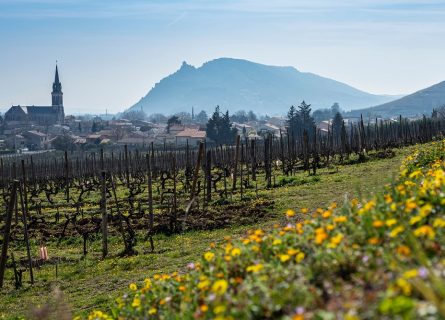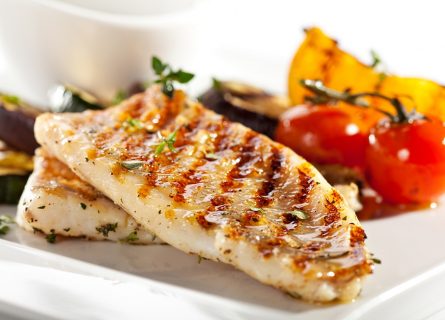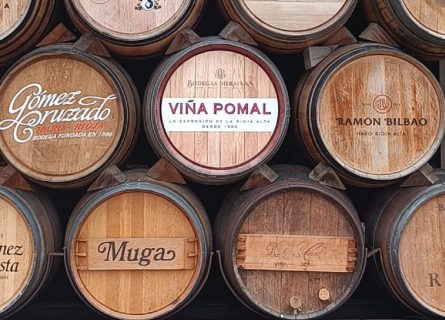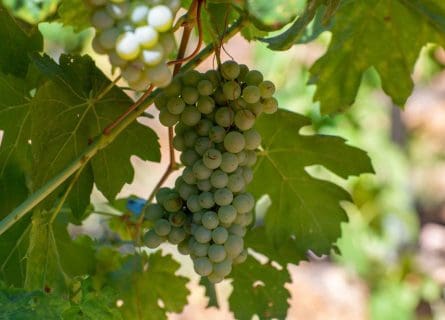Cornas Wine Region Guide
Unveiling Cornas: Beyond the Shadows of Hermitage and Côte Rôtie, Lies a Symphony of Syrah's Finest
EXPLORE ALL OUR RHôNE VALLEY WINE REGION GUIDES
Last updated: April 4, 2025
Introduction
There is no shortage of vinous celebrities in the northern Rhône Valley. The undisputed kings of the region are the finest wines of Hermitage and Côte-Rôtie. Syrah grapes from these appellations are crafted into exquisite wines, adored by collectors and critics worldwide.
The immense hype surrounding these two regions overshadows the many other treasures waiting to be discovered here. The modest (in reputation but not in quality) appellation of Cornas definitely qualifies. It produces some of the Rhône’s finest Syrah; these concentrated, mineral-edged wines are dark in color and rich in tannin. It’s time for them to step into the limelight.
Discover More About French Wine
History

Cornas thrived as a center of a sophisticated Celtic civilization in the pre-Roman era for centuries. However, it fell after Caesar’s armies invaded Gaul (France) in the last century BC. Nevertheless, they are responsible for naming this part of the Rhône Valley – Cornas, which translates as “burnt earth” in ancient Celtic.
However, the Romans popularized viticulture in the Northern Rhône, planting vines on steep terraces supported by “chaillées” (dry stone walls). Meanwhile, the Roman city of Lugdunum (Lyon) emerged as the capital of a vast province known as the Three Gauls. As a key strategic outpost of the Western Empire, it received its fair share of trade and visitors.
Medieval Governance and Ecclesiastical Influence
Yet, the first written record of winemaking in Cornas did not appear until the 10th century, many years after the collapse of the Western Roman Empire in AD 476. By the Middle Ages, the Frankish kings of the Merovingian and Carolingian dynasties conquered the Rhône Valley. In 800, Charles the Great became the first emperor of the Holy Roman Empire.
After that, the Catholic Church managed and organized wine growing in the Rhône Valley. The great statesman and Catholic prelate Armand Jean du Plessis was reportedly a major acolyte of the potent red wines of Cornas.
Modern Evolution and Recognition
Cornas finally received its own appellation in 1938. Yet a lack of investment hampered the zone. Allied to economic stagnation, this ensured that Cornas never developed a prestigious reputation equal to that of its neighbors.
However, at the end of the 1990s, the international wine community started noticing Cornas and its spicy, full-bodied Syrah reds. Auguste Clape and Jean-Luc Colombo spearheaded the resurgence of Cornas. Their successors continue to promote Cornas’s good name worldwide, attracting more wine lovers to this beguiling destination.
Geography and terroir

Cornas is one of the prettiest communes of the Rhône Valley, nestled between Valence to the south and Pont-de-l’Isère to the north. It is a relatively small appellation, with just over 155 hectares of vineyards cultivated on the left bank of the Rhône River. In this spectacular scene, vines perch on terraced slopes of crumbling granite, rising to 350 meters above sea level in some places.
Terroir and Climate
Cornas earns its acclaim for its exceptional terroir. The zone boasts an east-facing amphitheater of terraces, ideally situated to capture the sun’s rays. This favorable aspect also provides shelter from the cold mistral winds that can disrupt bud burst and flowering in spring. For that reason, Syrah ripens at a quicker pace in Cornas than Hermitage or St-Joseph, yielding berries rich in sugar and anthocyanins. Much like Hermitage, though, the climate in Cornas shows continental flourishes, with cold winters and very warm summers.
Diversity of Soils and Microclimates
According to local growers, the most favored climats (vineyard sites) are located northwest of the village, planted on metamorphic soils that offer good drainage and heat retention. The notoriously infertile granite soils of Cornas force the vines to dig deep into the bedrock on a relentless quest for vital minerals.
Further north, we encounter a greater percentage of sand and chalk in the topsoil in the Les Chaillot subzone. Some of the most fragrant and elegant Syrah is produced from these vineyards. However, winemakers prefer the calcareous soils of La Côte and La Combe in the south, where structured wines of great elegance and longevity are produced.
Appellation Growth and Preservation
In certain parts of the world (we’re looking at you, Chablis!), the temptation to stretch a good name to breaking point with rapid vineyard expansion is too lucrative to resist. However, the narrowness of the northern Rhône Valley limits any major expansion of appellations like Cornas, which is only to our benefit. Nevertheless, the area under vine has gradually increased over the past 40 years, albeit its size is dwarfed by St-Joseph (over 1000 hectares) and Cote Rotie.
Winemaking and regional classifications

Although the appellation’s overall standard of winemaking and viticulture is quite high, it would be inaccurate to describe every bottle of Cornas as mesmerizing. Indeed, we have sampled various styles, including some well-made (but very straightforward) wines that would not benefit from further aging.
At the opposite end of the spectrum, however, are the majestic, intensely concentrated, and tannic wines of Domaine Clape, matured in used oak barrels – the winemaker abhors new barrique – for at least 18 months.
Syrah Singular
The only commonality is the grape variety. Every single bottle of Cornas is a 100% Syrah wine. Unlike Hermitage, Cornas prohibits blending and the use of white grape varieties. For historical and cultural reasons, Cornas growers feel that including white grapes is both superfluous and detrimental to wine quality. There is almost a total consensus on this issue.
Divergent Winemaking Philosophies
Yet producers in the region have wildly different views on the role of new oak, for example, and differing attitudes to harvest dates, fermentation methods, and fining/filtration.
In the 1990s, Jean-Luc Colombo gained renown for its use of generous amounts of new oak, crafting Syrah wines known for their power and richness. Recent years have seen a shift away from heavy oak influence, reflecting evolving consumer preferences. The granite and clay soils of Cornas naturally endow the grapes with captivating aromas and intense flavors.
Many argue that excessive oak use masks these very qualities, diminishing the unique character of the terroir. So, to preserve fruit quality, many winemakers ferment in water-cooled stainless steel tanks, preventing the fruity esters from ‘burning out’ at higher temperatures.
Traditionalism vs. Modernization
Nevertheless, producers like Domaine Clape do not want ‘nouveau-style’ wines for early drinking. Thus, they prefer a reasonably long fermentation and maceration to extract enough tannin and color. As a staunch traditionalist, Pierre-Marie Clape believes in the neutral background of old oak, exposing the wine to small amounts of oxygen and softening its structure.
The results in bottle are memorable: purple-black in color and incredibly tannic when young. Over time, however, a mosaic of tertiary flavors will emerge, including white pepper, garrigue, cassia, and mocha. In the best vintages, you can cellar any bottle of Domaine Clape for at least 15 years.
Facts & Figures
Key wine styles
- Full-bodied red wines
Appellation structure
- AOC Cornas
Hectares under vine
- 155
Average annual production
- 5530 hectoliters per annum
Approximate number of producers
- 50 growers
The lowdown
The desire to compete on equal terms with Hermitage and Côte Rôtie hangs heavily over the vineyards of Cornas. The region’s winemakers are a proud – and passionate – collection of individuals. However, they are also acutely aware of their perceived status in the hierarchy of the northern Rhône.
Both the critical establishment and high-net-worth collectors have never taken the appellation as seriously as its more illustrious neighbors – that is simply an inarguable fact. The average bottle price of Cornas wines has historically reflected this preference, except for Domaine Clape.
Proven Potential and Overcoming Obstacles
Yet, Domaine du Tunnel, Vincent Paris, the aforementioned Domaine Clape, and the marvelous work of Eric and Joel Durand have proven the potential for first-class wines time and time again. What held Cornas back in the 20th century was a dearth of investment rather than substandard terroir or a lack of human talent.
After all, you cannot argue with ancient granite soils, a favorable mesoclimate, and the perfect combination of elevation and aspect! Such advantages allow growers to harvest ripe berries packed full of flavor and tannin, matured in oak (both new and used) in a manner that closely emulates the winemaking culture of Hermitage and, indeed, Côte Rôtie.
Challenging Perceptions and Embracing Excellence
Of course, selling this equivalency to consumers will take time and effort – the hard work is far from over. But, if you taste these magnificent wines in a blind setting (without seeing the label), it is difficult to argue that Cornas is inherently inferior to the best Syrahs of the Rhône Valley.
A typical example from a top domaine is ripe and expressive, with noticeably more concentration and ‘stuffing’ than St-Joseph; the tannins are ripe and integrated, and the finish is exceptionally long. So put aside your preconceptions about Cornas and seek out the best producers in this venerable appellation. You’ll be experiencing Syrah at its most profound and complex at less than half the cost of La Mouline.
Key Grape Varietals
-
Syrah
Syrah is dark-skinned and perhaps the most underrated of the 'noble' red grape varieties.
Find out more
Cornas gastronomy

Hungry epicureans who don’t fancy the 87-kilometer trip to Lyon should reserve a table in Valence. Blessed with a charming old town and friendly locals, it is the perfect spot for a leisurely meal. Anne-Sophie Pic, the only female chef in France with three Michelin stars, is a legend in these parts; however, there are plenty of excellent (and less expensive) bistros in the old town.
Highlights include freshwater perch, roast pork rubbed in garlic, nougat from Montelimar, and le vin!
A Gastronomic Guide to the Cusine of Rhone: Read more
Wineris Recommended by Cellar Tours
-
Domaine Alain Voge
Read more -
Domaine Clape
-
Domaine Vincent Paris
Read more -
Jean-Luc Colombo
Read more -
Marcel Juge
-
Thierry Allemand
-
Philippe Pacalet
Read more -
Domaine Paul Jaboulet Aîné
Discover Jaboulet's exquisite Rhône wines. Renowned for Hermitage La Chapelle, an iconic standard of perfection. Experience greatness today. Plan your trip! Read more
Further Reading: Discover More Related Blog Content
More information
If you would like us to customize an exclusive luxury tour, contact us and let us know your travel plans. We offer luxury food and wine tours for private groups of a minimum two guests. In addition, all of our private, chauffeured tours are available year-round upon request.















